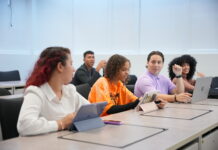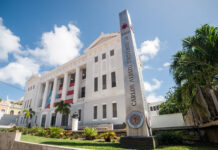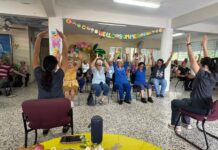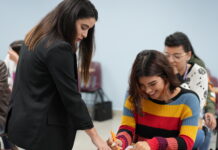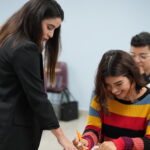A

s summer break came to an end, school once again became the place where children and teens spend most of their day. When we see school as an extension of the home, given its formative role, it’s clear that any adversity a student experiences in their family or community can surface in the classroom. Recognizing signs of trauma early can be key to providing the right support and activating timely interventions.
Dr. Ivelisse Torres Fernández, Associate Professor at Albizu University’s Mayagüez University Center, explains: “At some point in life, a person will be exposed to a traumatic experience, but not all will develop symptoms.” How a person reacts depends on factors such as the intensity and proximity of the event, as well as their age.
According to Torres Fernández, possible indicators of trauma include sudden changes in behavior or daily routines, disruptions in sleep or eating patterns, loss of interest in previously enjoyable activities, hypervigilance, irritability, hyperactivity, difficulty concentrating, and emotional dysregulation. Often, teachers are the first to notice these behavioral shifts.
“At some point in life, a person will be exposed to a traumatic experience.”
When intervention is needed, Torres Fernández recommends the EVA (Spanish acronym) model as a practical guide for educators to adopt a trauma-informed mindset:
- Listen actively and without judgment.
- Validate the student’s feelings or reactions, acknowledging that something is affecting them, even if all the details aren’t yet known.
- Accompany the student by asking questions that help identify the kind of support they need.
This first step should lay the groundwork for a broader, coordinated effort. In school psychology, the Multi-Tiered Systems of Support (MTSS) framework is often used to address the root causes of emotional or academic challenges. It involves health and school-based professionals working together to connect families, schools, and communities. Beyond identifying trauma, the goal is to create a school environment that feels safe and responsive.
One model within MTSS is Positive Behavioral Interventions and Supports (PBIS), which operates on three tiers:
- Universal prevention: schoolwide strategies to model and reinforce positive behavior.
- Targeted support: small group interventions for students at higher risk, focusing on skills like self-regulation and conflict resolution.
- Intensive intervention: individualized therapy or specialized assistance for students with greater needs.
“Collaboration with the social worker, school counselor, nurse, teachers, and principal is fundamental.”
While the specific structure may differ from school to school, research consistently shows that combining approaches strengthens support systems and helps identify cases that need professional evaluation or treatment beyond what the school can provide.
Torres Fernández stresses that interventions should be continually evaluated to measure effectiveness and refined as needed. She also underscores the value of collaboration: “Collaboration with the social worker, school counselor, nurse, teachers, and principal is fundamental not only for the student’s emotional development but also for their academic success.”
From the classroom, a trauma-informed approach can set students on a path toward healing and resilience. The ultimate aim is for them to develop skills that carry over into their home and community life, and as Torres Fernández emphasizes, “to feel accompanied, supported, and understood” every step of the way.





